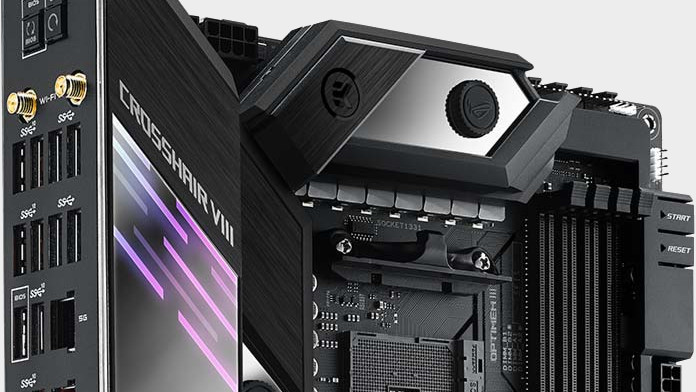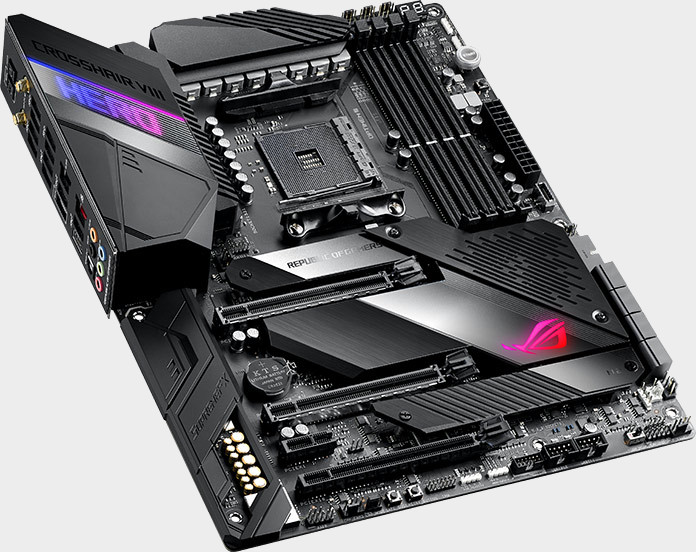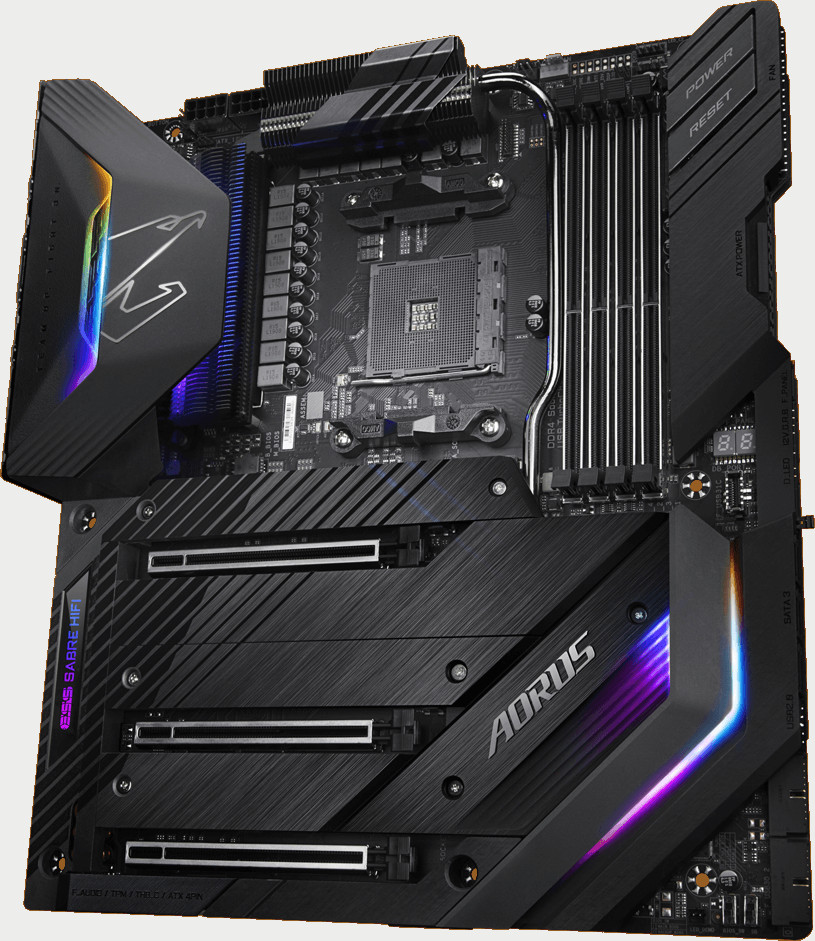X570 motherboards are ready for Ryzen 3000 and PCIe 4.0
Asus, Gigabyte, and MSI all have numerous X570 motherboards for AMD's Ryzen 3000 launch.

Computex is here, and we’ve already seen plenty of exciting announcements. Faster SSDs, new cases, and refreshed laptops have already been teased, but AMD’s new Ryzen 3000 processors and Navi-based graphics cards received the most attention from PC enthusiasts. But what good is a shiny new CPU if you don’t have one of the best gaming motherboards to put it in? Well, you’re in luck, because Computex is the place to show off new motherboards, and all the major manufacturers have already announced many of their upcoming boards for AMD’s X570 platform.
Asus
Asus spilled the beans on its first X570 boards before AMD even had a chance to talk about the new processors. Our friends at Tom’s Hardware already got a peek at some of the company’s new models, but there are 12 in total—four ROG Crosshair VIII (keeping Roman numerals alive!), three ROG Strix, two TUF Gaming, and three ASUS Prime (including a workstation model):
- Asus ROG Crosshair VIII Formula (ATX)
- Asus ROG Crosshair VIII Hero (Wi-Fi) (ATX)
- Asus ROG Crosshair VII Hero (ATX)
- Asus ROG Crosshair VIII Impact (Mini DTX)
- Asus ROG Strix X570-E Gaming (ATX)
- Asus ROG Strix X570-F Gaming (ATX)
- Asus ROG Strix X570-I Gaming (Mini ITX)
- Asus TUF Gaming X570-Plus (Wi-Fi) (ATX)
- Asus TUF Gaming X570-Plus (ATX)
- Asus Prime X570-Pro (ATX)
- Asus Prime X570-P (ATX)
- Asus Prime WS X570-ACE (ATX)
Asus’s flagship board is the ROG Crosshair VIII Formula, designed for use in liquid-cooled (and liquid nitrogen cooled) systems. The ATX-sized board is covered in armored plates and RGB lighting, and features two DDR4 slots, two PCIe x16 slots, 8 SATA 6GB/s connectors, two M.2 slots (one 22110, one 2280), Gigabit Ethernet, Intel Wireless 802.11 a/b/g/n/ac/ax, SupremeFX S1220 audio, and USB 3.2 Gen 2 support. Drop the Formula and go with a Hero board to get two more DIMM slots.

The Crosshair VII Impact seems to be a good premium choice for compact builds, as it uses the smaller mini-DTX form factor. It keeps as many features as possible from the larger ATX boards, but shrunk down into a motherboard similar in size to a mini-ITX board. It has two DDR4 slots instead of four, only one PCIe x16 slot, and 4 SATA connectors instead of 8. The board still has built-in Wi-Fi, SupremeFX audio, Gigabit Ethernet, and plenty of USB ports.
As you might expect, pricing and availability aren’t public at this time, but the boards should launch alongside Ryzen 3000 in July.
Gigabyte
Gigabyte also unveiled a lot of X570 motherboards—in fact, there are already eight of them. Only one of them directly bears the Gigabyte name, with others using the Aorus brand.

The top of the class is the X570 Aorus Xtreme, and it has nearly every feature you can think of: four DIMM slots, a “thermal reactive armor design,” multiple temperature sensors, PCIe 4.0 support, Gigabit Ethernet, built-in Intel Wi-Fi 6 (802.11ax), and even a TurboCharger’ USB port for quickly topping up your smartphone.
The biggest gaming news, reviews and hardware deals
Keep up to date with the most important stories and the best deals, as picked by the PC Gamer team.
Again, pricing information for Gigabyte’s boards isn’t available, but the boards should arrive in July.
MSI
The first round of X570 boards from MSI include five Gaming models, one Prestige, and one Pro. Here are all the model numbers:
- MEG X570 Godlike
- MEG X570 ACE
- MPG X570 Gaming Pro Carbon WiFi
- MPG X570 Gaming Edge WiFi
- MPG X570 Gaming Plus
- Prestige X570 Creation
- X570-A Pro
The highest-end motherboard is the X570 Godlike, which includes an OLED display with live hardware information, Killer Wi-Fi 6, a new heatsink design, and RGB lighting effects. It’s built with overclocking in mind, and it definitely sounds impressive on paper.
On the other side of the spectrum, the MPG 570 Gaming Plus looks to be a promising budget option. It still has a heatsink and shielded components, as well as a PCB designed to make cable management as easy as possible.
We expect pricing to be similar to previous generation MSI boards, meaning the Godlike model is probably a bit too much for most gamers, but we’ll find out more around the third gen Ryzen launch in July.
Corbin is a tech journalist, software developer, and longtime PC Gamer freelance writer, currently based in North Carolina. He now focuses on the world of Android as a full-time writer at XDA-Developers. He plays a lot of Planet Coaster and Fallout and hosts a podcast all about forgotten stories from tech history.



